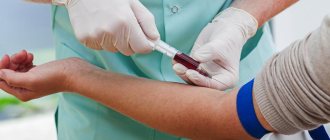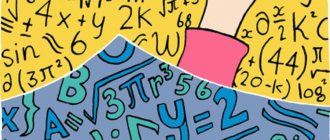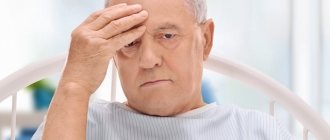1.What is dystonia and its causes?
Dystonia is a movement disorder. Dystonia causes a person's muscles to contract uncontrollably. Muscle contraction causes the body to move spontaneously, resulting in repetitive movements and abnormal postures. Dystonia can affect a single muscle, a group of muscles, or even the entire body. Dystonia affects approximately 1% of the world's population, women are more prone to this.
Most cases of dystonia have no clear cause. Dystonia is usually associated with the ganglion basalis. The nucleus basalis is the area of the brain that is responsible for muscle contraction. Therefore, dystonia is a problem of nerves that cannot properly transmit signals to the muscles.
Acquired dystonia is caused by damage to the basal ganglia. Damage to the basal ganglia can occur as a result of:
- Brain injuries;
- Stroke;
- Tumors;
- Oxygen starvation;
- Infections;
- Reactions to drugs;
- Lead or carbon dioxide poisoning.
A must read! Help with treatment and hospitalization!
What reasons provoke dystonia?
Depending on the cause, dystonia can be primary (when dystonia is present as almost the only symptom) or secondary (when dystonia is explained by numerous causes and occurs in combination with other disorders) or depending on how many muscle groups are affected by the pathological process, Other forms of dystonia are also distinguished. Dystonia that affects the entire body is called Generalized Dystonia. Approximately 10% of all cases of dystonia are genetic in origin, but in most cases the cause of dystonia is unknown. However, known causes of some cases of dystonia include: blockages of blood vessels in the brain, injuries occurring during childbirth, car accidents or other similar injuries, and antipsychotic drugs and antidepressants.
2. Symptoms of the disease
Symptoms of dystonia can range from mild to very severe. Dystonia can affect different parts of the body, and often the symptoms of dystonia can gradually worsen. Some early symptoms include:
- Foot spasms;
- Involuntary blinking;
- Speech impairment;
- Neck extension.
Stress or fatigue can interfere with the symptoms of dystonia and make them worse. People suffering from dystonia often complain of pain and fatigue because the muscles constantly contract.
If symptoms of dystonia appear in childhood, they mainly affect the feet and hands. As you get older, the development of symptoms slows down.
When dystonia appears in adulthood, it first appears in the upper body. Adult-onset dystonia usually affects one or more parts of the body.
Visit our Neurology page
General information about pathology
Torsion dystonia (from the Latin “torsio” - twisting) is a chronic disease of the central nervous system, entailing tonic muscle disorders with the subsequent appearance of hyperkinesis and the formation of aphysiological postures in the patient. A pathology of this nature was first described in 1907, but given the symptoms it was classified as hysterical neurosis.
Later, in 2011, G. Oppenheim proved the organic nature of torsion dystonia, but for a long time there were numerous discussions on the nosological affiliation of the disease. The pathogenesis of torsion dystonia still remains unexplored.
The diagnosis of torsion dystonia is made to patients of any age. However, the vast majority of patients are young people under twenty years of age. 65% of the disease is diagnosed in children and adolescents under 15 years of age. Depending on the place of residence, the incidence of the pathology is 1 case per 160 thousand people or 1 per 15,000. On average, 40 cases per 100,000 population occur.
Torsion dystonia is considered a fairly pressing problem in modern medicine. This is due to the fact that the disease is becoming more common and leads to disability in young people. Moreover, today there is no truly effective pathogenetic therapy to minimize the complications of the disease.
3.Types of dystonia
Dystonia is often classified by the area it affects. According to this criterion, the following are distinguished:
- General dystonia (whole body);
- Focal dystonia (one part of the body);
- Multifocal dystonia (several parts of the body);
- Segmental dystonia (multiple connected body parts);
- Dystonia that affects only the left or right side of the body.
Dystonia can also be classified into syndromes:
- Tonic blepharospasm. With this type of dystonia, the person blinks frequently;
- Cervical dystonia or torticollis. This is a neck deformity characterized by an incorrect position of the head with its tilt to the side and rotation;
- Cranial dystonia affects the head, face, and neck muscles;
- Oromandibular dystonia causes spasms of the jaw, lips and tongue. This type of dystonia can cause problems with speaking and swallowing;
- Spasmodic dystonia affects the muscles that are responsible for speech;
- Tardive dystonia is caused by drug use;
- Paroxysmal dystonia is episodic;
- Torsion dystonia is the rarest form. It affects the entire body and leads to disability.
Graphospasm or writer's cramp is a type of dystonia that affects the hands and occurs during writing.
About our clinic Chistye Prudy metro station Medintercom page!
Dystonia
Dystonia is a postural movement disorder characterized by pathological (dystonic) postures and violent, often rotational movements in one or another part of the body.
Classification of dystonias:
- Focal dystonia - in any one region of the body: face (blepharospasm), neck muscles (spasmodic torticollis), arm (writer's cramp), leg (foot dystonia), etc.
- Segmental dystonia - in two adjacent areas of the body (for example, torticollis and torsion spasm of the shoulder muscles)
- Multifocal dystonia - in 2 or more areas of the body that are not adjacent to each other (for example, blepharospasm and foot dystonia)
- Hemidystonia - dystonia on one half of the body. Always indicates the secondary nature of dystonia and primary organic damage to the hemisphere opposite the area of dystonia
- Generalized dystonia-dystonia in the muscles of the trunk, limbs and face
The relationship between focal and generalized forms of dystonia is mediated by age: the older the disease debuts, the less likely its subsequent generalization.
Diagnosis of almost all forms is exclusively clinical.
In primary forms of dystonia, no pathomorphological changes are found in the brain of patients, therefore their pathogenesis is associated with neurochemical and neurophysiological disorders, mainly at the level of brainstem-subcortical formations.
With “Dystonia plus”, in addition to the dystonic syndrome, other neurological syndromes are observed (for example, dystonia with parkinsonism and dystonia with myoclonus)
Secondary dystonia develops mainly as a result of exposure to external factors that cause damage to brain tissue (perinatal damage to the central nervous system, encephalitis, head injury, antiphospholipid syndrome, brain tumors, etc.)
Dystonia can develop in many neurodegenerative diseases caused by genetic disorders. It is often combined with other neurological syndromes, especially parkinsonism.
Pseudodystonia includes conditions in various diseases that superficially resemble dystonia (most often due to the presence of pathological postures), but pathogenetically do not relate to true dystonia.
General principles of treatment
Treatment of the underlying disease is necessary. However, symptomatic therapy is also widely used, which in many cases is the only available treatment method. All forms of non-drug therapy are used, including neurosurgical methods. For local forms of dystonia, botulinum neurotoxin (Botox, Dysport) is widely used subcutaneously. The duration of the effect is about 3 months. The courses are repeated up to 3-4 times.
4.How is the disease treated?
There are several ways to treat dystonia. First of all, the doctor determines the method of treating dystonia using its type. Recently they began to use a method in which Botox (a special toxin) is injected into the muscle. Botox blocks acetylcholine, which creates muscle contractions. Such injections must be repeated every three months.
When dystonia leads to immobilization, deep brain stimulation may be used. For deep brain stimulation, a special electrode is implanted in a specific area of the brain. The electrode is connected to a special battery, which is implanted in the chest. The electrode sends impulses to the brain and helps it function normally.
Drug treatment for dystonia boils down to taking medications that will prevent the muscles from contracting too much. Various physiotherapeutic procedures are also useful for treatment.
How is the operation performed?
Using a technique called Microelectrode Recording and Stimulation Technique, with which we can record the electrical activity of a single brain cell, our goal is to identify the cells responsible for the disease and the anatomical structures around them. To do this, we do not let the patient fall asleep during the operation, but rather, we talk to the patient, which allows us to more effectively monitor his/her reaction to this procedure. Thus, it is easier to reach the “problem” areas of the brain. In the first 2-3 hours during the operation, the awake patient helps us by sharing with us information about how he feels from the progress of the implanted electrodes. At this stage, the “Microelectrode Recording and Stimulation Technique” technology helps us achieve our goals. Thanks to this technique, we identify cells responsible for the disease and the anatomical structures around them with an accuracy of 80 microns. After reaching the appropriate area of the brain, we implant brain neurostimulator electrodes.
Development of symptoms of torsion dystonia (clinical observation)
Torsion dystonia is a rare progressive disease of the central nervous system, occurring with a frequency of 3-4 cases per 100,000 population and having 13 genetic forms.
It is characterized by an uneven increase in muscle tone in certain parts of the body and the development of fixed pathological postures, most often in the legs, but sometimes in the arms, neck and torso. The course is relatively benign, but pathological postures are gradually accompanied by mild Parkinson-like symptoms: slowness of movements, “dystonic”
Below is a brief description of the patient's follow-up observation, illustrating the complexity of diagnosing torsion dystonia. Noteworthy is the severity of the clinical manifestations (photos of the patient at different years of life) with an absolutely normal picture on MR images.
Patient L. was systematically hospitalized in the department of psychoneurology and epilepsy of the Russian Children's Clinical Hospital for 10 years (from 4 years 4 months to 15 years). Diagnosis on initial admission: neuroinfection (encephalomyelopolyradiculoneuritis). Final diagnosis: torsion dystonia, dopa-independent, generalized form, progressive course.
From the anamnesis it is known that the girl was born from the 5th pregnancy (the mother had 2 term births), which occurred against the background of OPG-preeclampsia. At birth, the body weight was 2 kg 900 g, height 51 cm, head circumference 35 cm. From birth she was under the supervision of a neurologist for muscular dystonia syndrome and hand tremor. Early development corresponded to age norms. At the age of 4.5 years, a girl, 2 days after suffering from acute respiratory viral infection, developed a paraparetic type of gait disturbance. Weakness in the legs progressed, and at 4 years 7 months. the girl stopped walking on her own.
The clinical picture of examination and treatment is presented in chronological order.
At 4 years 7 months. In the neurological status, muscular hypotonia in the legs, torpid tendon reflexes, support on the forefoot, instability in the Romberg position, and severe autonomic symptoms (marbling of the skin, cold wet feet and palms) were noted. I could walk 5-6 steps on my own.
Examined:
- X-ray of the spine – no changes;
- the fundus is normal;
- EMG of the lower extremities: signs of denervation changes with an emphasis on the right. Electrogenesis of the muscles of the lower extremities with signs of suprasegmental influences;
- MRI of the spinal cord: in the lumen of the dural sac at the T5-T8 level, single hypointense focal formations of irregular shape measuring 5-7 mm, adjacent to the posterior surface of the spinal cord, are determined.
Diagnosis: myelopolyradiculoneuritis.
Prednisone therapy was carried out, during which the patient began to walk independently again (with a paraparetic gait, periodically complaining of weakness in the legs), quickly tired, and could not run. After a sore throat, the condition worsened again.
At the age of 5 years 3 months. the girl was examined by specialists at the 1st MMA clinic named after. I.M. Sechenov, diagnosed with antiphospholipid syndrome. At the Rheumatology Research Institute, systemic connective tissue diseases were excluded.
In the neurological status at this age, extrapyramidal syndrome first appeared (increased muscle tone of a plastic type, stiffness in the lower extremities).
Examined:
- ENMG: suprasegmental disorders, predominantly extrapyramidal in nature;
- EEG: diffuse cerebral changes in bioelectrical activity;
- Ophthalmologist: the fundus is normal;
- Genetic consultation: there is no evidence of hereditary pathology;
- MRI of the brain and spinal cord - no focal changes were detected. No lesions previously identified on MRI of the spinal cord were also found.
At 5 years 7 months. In the neurological status, the following were noted: lower paraparesis, increased muscle tone of the mixed cortical-subcortical type, high tendon reflexes, foot clonus.
Diagnosis: antiphospholipid syndrome. Subcortical syndrome.
Examined:
- ENMG: suprasegmental disorders, denervation changes at the C1-C4 level;
- Oculist: the fundus is unchanged;
- Endocrinologist: subclinical hypothyroidism.
She received metypred, mydocalm, nacom (1/4 t. x 2 times a day), l-thyroxine. During Nakom therapy, a temporary slight improvement was noted - a decrease in hypertonicity, increased movements in the lower extremities. After 2 months from the start of nacom therapy, clinical symptoms returned to baseline.
At the age of 6 years, dysarthria appeared in the neurological status, muscle tone was increased of a mixed type, tendon reflexes were high regardless of the sides, pathological symptoms on both sides. Slight tremor of the fingers of outstretched arms. Light intention when performing the finger-nose test. Doesn't walk independently.
Diagnosis: subacute sclerosing panencephalitis.
Examined:
- ENMG: suprasegmental disorders;
- Oculist: fundus without pathology;
- Myelography: spinal cord space-occupying process excluded;
- CT scan of the brain: no changes.
Received treatment: mydocalm, nacom.
At 6 years 4 months. Diagnosis: disseminated encephalomyelopolyradiculoneuritis, clinical symptoms the same.
At 7 years 7 months. the condition has worsened: muscle tone is increased according to the extrapyramidal type, more on the left. Speech has changed - quiet, slow, the patient is hypomimic. A tremor of the tongue appeared, and the tremor of the fingers intensified. Hyperkinesis was noted in the legs.
Diagnosis: lower spastic paraplegia (Strumpel's disease) with extrapyramidal disorders.
I received nootropil, cerebrolysin, nacom, mydocalm. An attempt to administer finlepsin led to increased hyperkinesis in the legs.
At 11 years old, in a neurological status: does not walk independently, tetraparesis, increased tone of a mixed type with a predominance of extrapyramidal. Quiet, slow speech. Tremor of the trunk, left-sided hemiballismus, torsion dystonia in the muscles of the trunk, torticollis. Hyperkinesis intensifies with movement and is combined with pathological synkinesis. Hypomimic.
Diagnosis: degenerative disease of the central nervous system, unclassified form. Hypothyroidism.
Examined: MRI of the brain - no changes.
When examined at the age of 12, it was noted that the condition was severe: he did not walk independently, could not get out of bed, only sat with support for a short time. Movement in the hands is impaired - cannot grasp objects, feeds with outside help. Most of the time he reads books, the pages of which he turns with his tongue. Tetraparesis, increased tone of the extrapyramidal type. Speech is dysarthric. Trunk tremor, left-sided hemiballismus, severe torsion dystonia of the limbs, torticollis. Hyperkinesis intensifies with movement. The diagnosis is suspected: torsion dystonia, dopa-independent form.
Follow-up observation. From the moment this diagnosis was made to the present (17 years old), the girl’s condition has been slowly deteriorating: torsion deformities and muscle rigidity are increasing. Repeated genetic analysis for DYT1 (dystonia type 1) did not reveal mutations; analysis for the other 12 forms was not carried out. Wilson-Konovalov disease (ceruloplasmin, copper is normal) and rheumatism were repeatedly excluded. During the course of the disease, no symptoms were noted that would refute the diagnosis of torsion dystonia.
Discussion:
The clinical picture of primary dystonia consists of gait disturbance, limb dystonia, lordosis or scoliosis, and postural tremor. Sometimes with primary dystonia, signs of parkinsonism are observed: bradykinesia, rest tremor, hypomimia, cogwheel symptom, night myoclonus. It should be noted that no matter how severe the motor disorders, the patients’ intelligence never suffers. On the contrary, their mental sphere is characterized by wit and observation, combined with a pessimistic mood.
Torsion dystonia is not characterized by morphological changes in the brain. The development of the disease is associated with disruption of neurotransmitter metabolism in the basal ganglia. Electrophysiological studies (electromyography) show that with dystonia, the central inhibition of reflex muscle tension under the influence of tactile stimuli is disrupted. The exact changes in neurochemistry in dystonia are unknown, but dopamine and its metabolites play a leading role.
It is difficult to diagnose torsion dystonia, since the diagnosis is based on clinical symptoms (dystonic postures and manifestations of parkinsonism) and the steadily progressive course of the disease. Unlike other genetic diseases, in this case there are no paraclinical diagnostic methods. A characteristic feature of torsion dystonia is an absolutely normal picture on neuroimaging, even in patients with severe clinical manifestations. Despite the fact that today all 13 genetic forms of the disease are known, in practice genetic analysis is carried out only for DYT1 - dystonia type 1. This form of the disease occurs in 20% of cases of torsion dystonia and is the most common.
Genetic tests for other forms are not yet carried out in the clinic due to technical complexity and high cost of reagents. Electromyography (EMG) reveals contractions of agonists and antagonists lasting more than 30 seconds, which end in a short period of quiescence; Repeated rhythmic contractions are also detected - 1-2 per second. - in the form of fast, irregular, short twitches and tremors of 6-10 Hz.
The diagnosis of torsion dystonia is largely based on the exclusion of other diseases that have a similar clinical picture. First of all, these are diseases of copper metabolism (Wilson-Konovalov disease), iron (Hallervorden-Spatz disease), etc.
Due to the genetic nature of the disease, etiotropic and pathogenetic treatment of torsion dystonia has not yet been developed. For symptomatic therapy, drugs that affect dopamine metabolism are used: dopamine agonists (carbidopa, levodopa); anticholinergics (trihexyphenidyl (Cyclodol), benztropine, procyclidine, ethopropazine), muscle relaxants (baclofen, clonazepam, tizanidine (Sirdalud), tolperisone (Mydocalm)), anticonvulsants (carbmazepine, gabapentin) and dopamine antagonists (neuroleptics). Drug therapy for torsion dystonia is complicated by side effects and a narrow therapeutic window. The use of botulinum toxin A injection into muscles is due to the interaction of botulinum toxin with acetylcholine receptors, which relax muscles. The method is indicated for focal dystonia, the effect is observed in approximately 50% of cases. The duration of action of botulinum toxin A is from 1 to 6 months, after which repeated administration is required. If medications are ineffective and symptoms progress slowly, neurosurgical treatment is performed, which consists of deep stimulation of the globus pallidus.
In recent years, research has been actively carried out on gene therapy for torsion dystonia in animal models. The positive results of these studies provide hope for patients.
Source: Medical Council magazine No. 3 2007.







